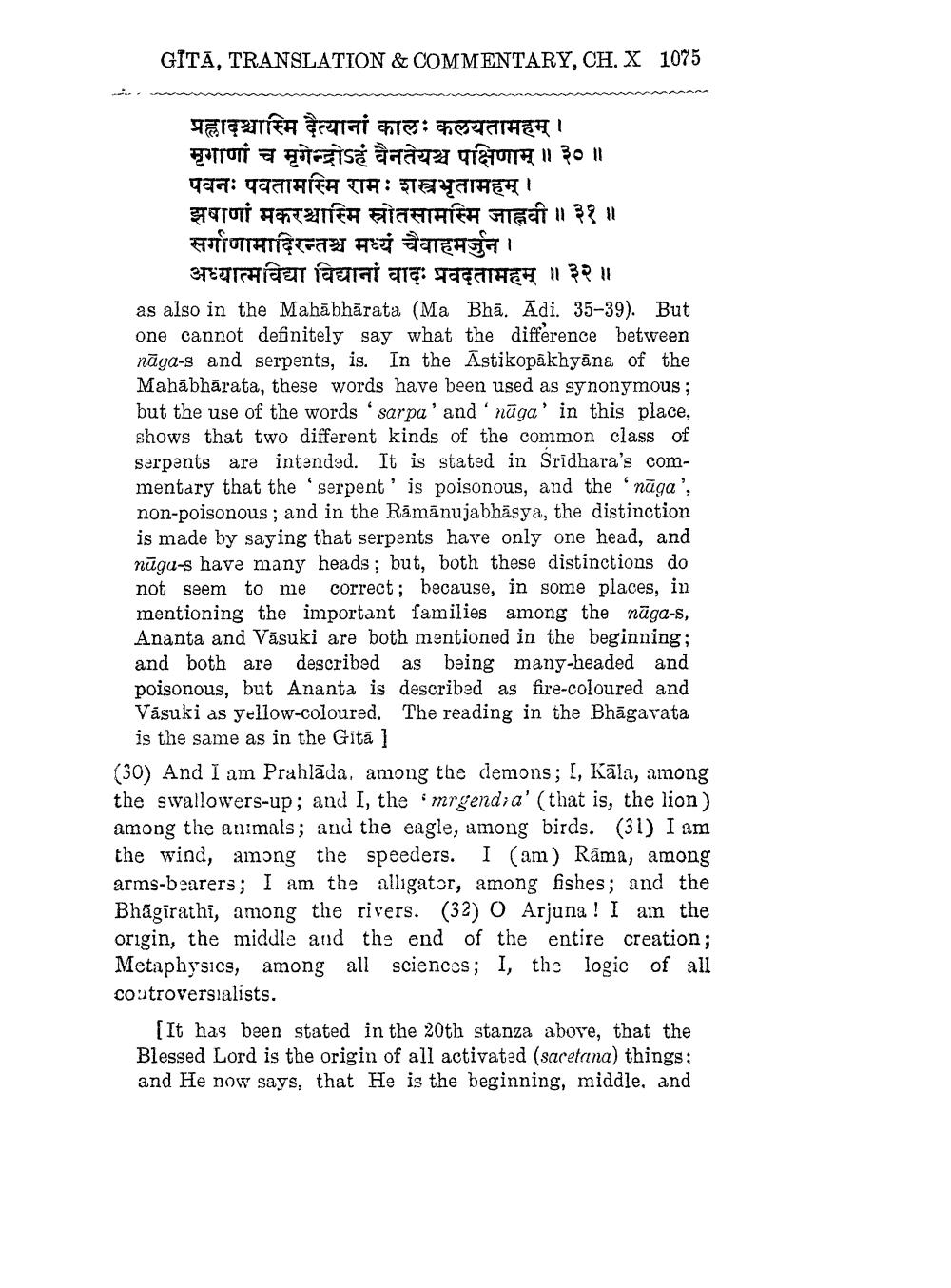________________
GITĀ, TRANSLATION & COMMENTARY, CH. X 1075
प्रह्लादश्चास्मि दैत्यानां काल: कलयतामहम् । मृगाणां च मृगेन्द्रोऽहं वैनतेयश्च पक्षिणाम् ॥ ३० ॥ पवनः पवतामस्मि रामः शस्त्रभृतामहम् । झषाणां मकरश्चास्मि स्रोतसामस्मि जाह्नवी ॥३१॥ सर्गाणामादिरन्तश्च मध्यं चैवाहमर्जुन।
अध्यात्मविद्या विद्यानां वादः प्रवदतामहम् ॥ ३२ ॥ as also in the Mahābhārata (Ma Bhā. Ādi. 35-39). But one cannot definitely say what the difference between nāga-s and serpents, is. In the Astikopākhyāna of the Mahābhārata, these words have been used as synonymous; but the use of the words 'sarpa' and 'nūga' in this place, shows that two different kinds of the common class of serpents are intended. It is stated in Sridhara's commentary that the 'serpent' is poisonous, and the 'nāga', non-poisonous; and in the Rāmānujabhāsya, the distinction is made by saying that serpents have only one head, and nūgu-s have many heads; but, both these distinctions do not seem to me correct; because, in some places, in mentioning the important families among the nāga-s, Ananta and Väsuki are both mentioned in the beginning; and both are described as being many-headed and poisonous, but Ananta is described as fire-coloured and Vásuki as yellow-coloured. The reading in the Bhāgavata
is the same as in the Gitā (30) And I am Prahlada, among the demons; !, Kāla, among the swallowers-up; and I, the mrgendia' (that is, the lion) among the animals; and the eagle, among birds. (31) I am the wind, among the speeders. I (am) Ráma, among arms-bearers; I am the alligator, among fishes; and the Bhāgirathi, among the rivers. (32) O Arjuna ! I am the origin, the middle and the end of the entire creation; Metaphysics, among all sciences; I, the logic of all coutroversialists.
[It has been stated in the 20th stanza above, that the Blessed Lord is the origin of all activated (sacetana) things: and He now says, that He is the beginning, middle, and




